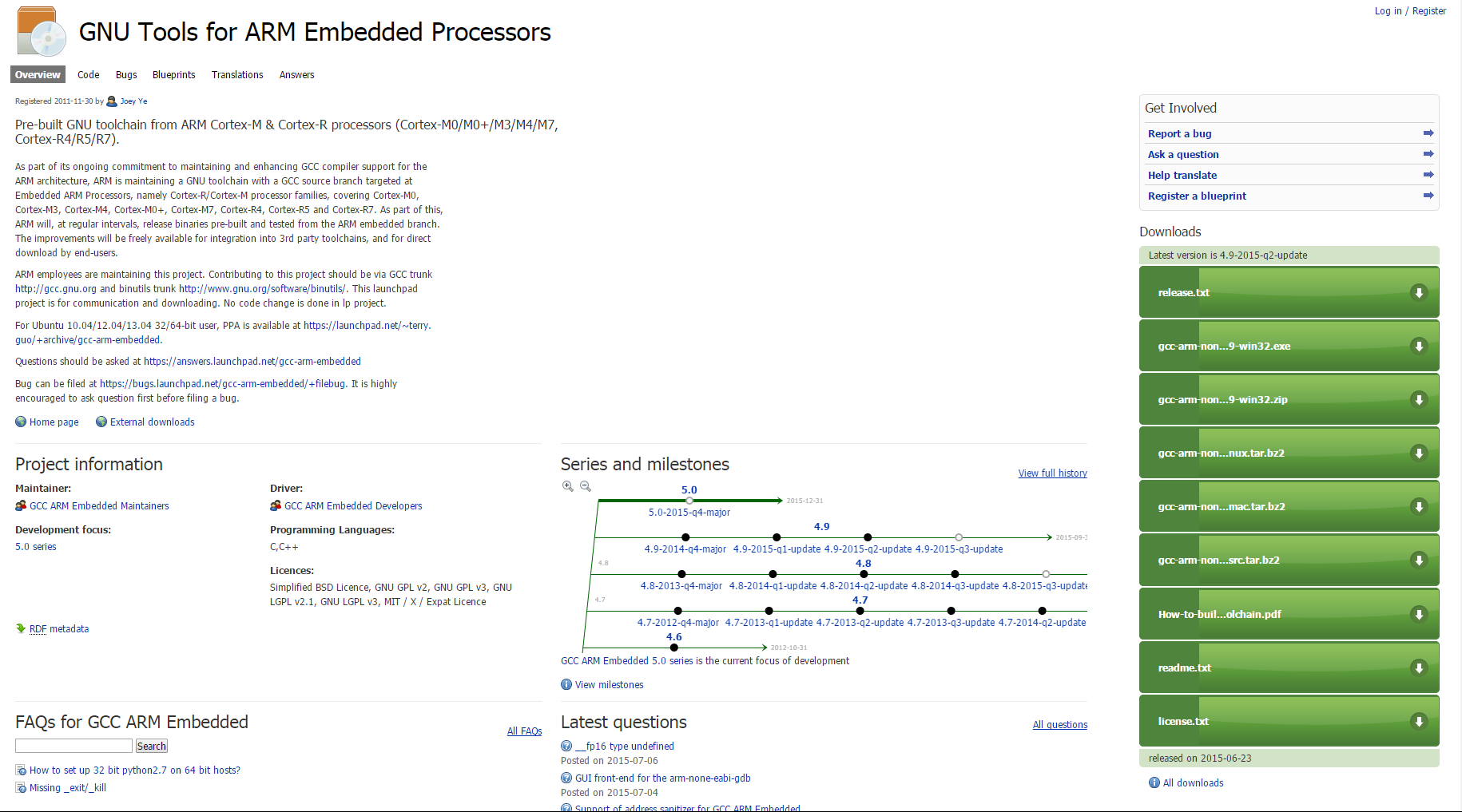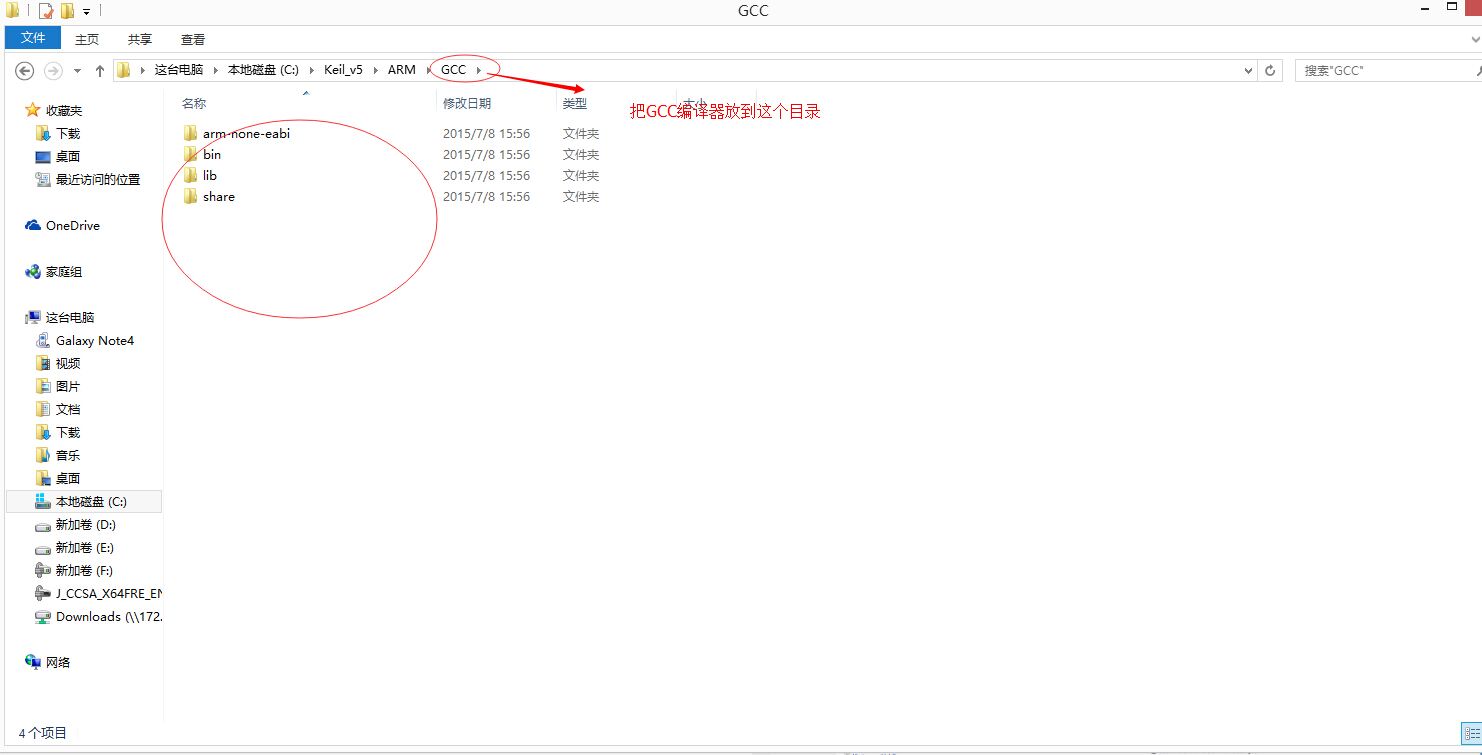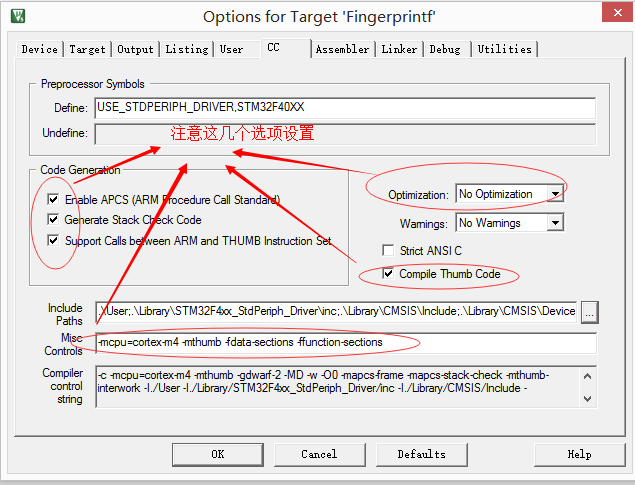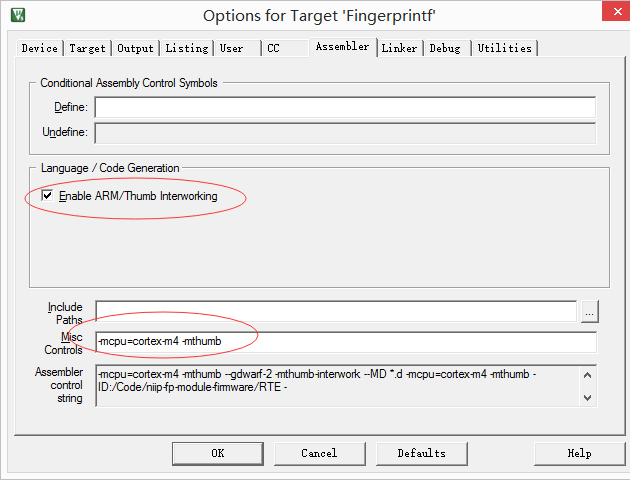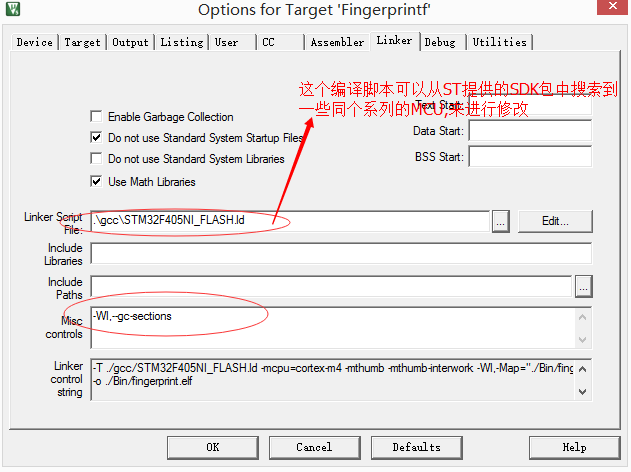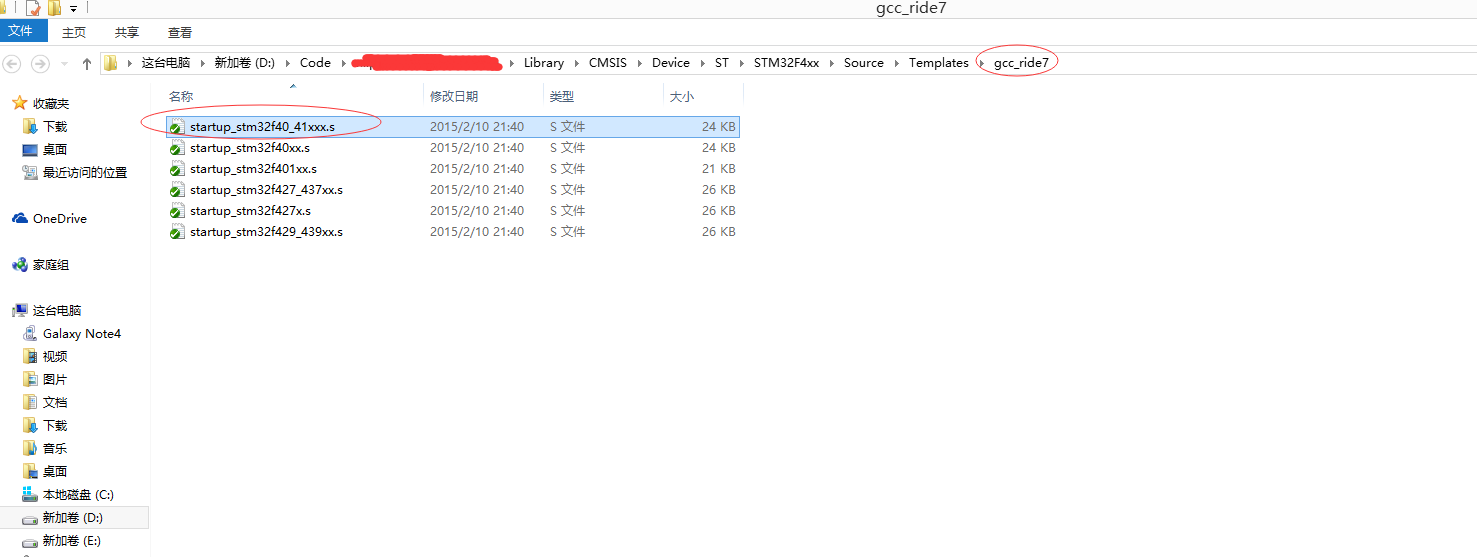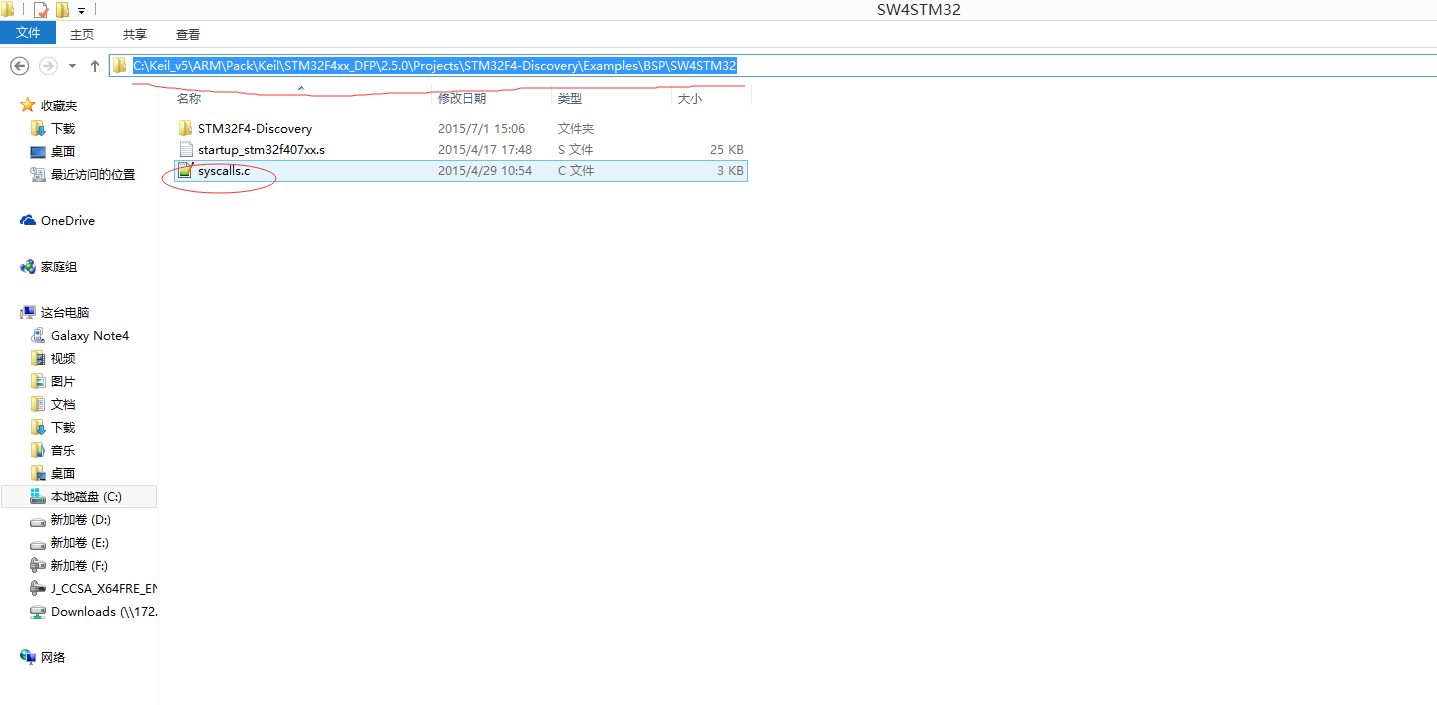我们使用Keil一般使用ARMCC编译MCU工程代码.其实,Keil也是支持内嵌GCC编译器的.我们可以使用GCC来编译我们的工程代码.
一、下载GCC编译器
二、安装GCC
我们可以把GCC解压到keil的安装目录下面.如下图
三、配置Keil使用GCC编译器
1、配置CC编译规则,Misc Controls 填写
-mcpu=cortex-m4 -mthumb -fdata-sections -ffunction-sections
2、Assembler中规则,Misc Controls 填写
-mcpu=cortex-m4 -mthumb
3、Linker中填写,Misc Controls 填写
-Wl,–gc-sections
-Wl,–gc-sections 这个主要是要把没有调用的函数不编译到hex中
注意:对于-mcpu=cortex-m4这个,如果你使用的是m3的芯片,则修改成-mcpu=cortex-m3
4、STM32F405NI_FLASH.ld的代码参考
/*
*****************************************************************************
**
** File : stm32_flash.ld
**
** Abstract : Linker script for STM32F407VG Device with
** 1024KByte FLASH, 128KByte RAM
**
** Set heap size, stack size and stack location according
** to application requirements.
**
** Set memory bank area and size if external memory is used.
**
** Target : STMicroelectronics STM32
**
** Environment : Atollic TrueSTUDIO(R)
**
** Distribution: The file is distributed 揳s is,?without any warranty
** of any kind.
**
** (c)Copyright Atollic AB.
** You may use this file as-is or modify it according to the needs of your
** project. This file may only be built (assembled or compiled and linked)
** using the Atollic TrueSTUDIO(R) product. The use of this file together
** with other tools than Atollic TrueSTUDIO(R) is not permitted.
**
*****************************************************************************
*/
/* Entry Point */
ENTRY(Reset_Handler)
/* Highest address of the user mode stack */
_estack = 0x2001FFFF; /* end of RAM */
/* Generate a link error if heap and stack don't fit into RAM */
_Min_Heap_Size = 0x400; /* required amount of heap */
_Min_Stack_Size = 0x800; /* required amount of stack */
/* Specify the memory areas */
MEMORY
{
FLASH (rx) : ORIGIN = 0x8000000, LENGTH = 1024K
RAM (xrw) : ORIGIN = 0x20000000, LENGTH = 128K
CCMRAM (rw) : ORIGIN = 0x10000000, LENGTH = 64K
}
/* Define output sections */
SECTIONS
{
/* The startup code goes first into FLASH */
.isr_vector :
{
. = ALIGN(4);
KEEP(*(.isr_vector)) /* Startup code */
. = ALIGN(4);
} >FLASH
/* The program code and other data goes into FLASH */
.text :
{
. = ALIGN(4);
*(.text) /* .text sections (code) */
*(.text*) /* .text* sections (code) */
*(.glue_7) /* glue arm to thumb code */
*(.glue_7t) /* glue thumb to arm code */
*(.eh_frame)
KEEP (*(.init))
KEEP (*(.fini))
. = ALIGN(4);
_etext = .; /* define a global symbols at end of code */
} >FLASH
/* Constant data goes into FLASH */
.rodata :
{
. = ALIGN(4);
*(.rodata) /* .rodata sections (constants, strings, etc.) */
*(.rodata*) /* .rodata* sections (constants, strings, etc.) */
. = ALIGN(4);
} >FLASH
.ARM.extab : { *(.ARM.extab* .gnu.linkonce.armextab.*) } >FLASH
.ARM : {
__exidx_start = .;
*(.ARM.exidx*)
__exidx_end = .;
} >FLASH
.preinit_array :
{
PROVIDE_HIDDEN (__preinit_array_start = .);
KEEP (*(.preinit_array*))
PROVIDE_HIDDEN (__preinit_array_end = .);
} >FLASH
.init_array :
{
PROVIDE_HIDDEN (__init_array_start = .);
KEEP (*(SORT(.init_array.*)))
KEEP (*(.init_array*))
PROVIDE_HIDDEN (__init_array_end = .);
} >FLASH
.fini_array :
{
PROVIDE_HIDDEN (__fini_array_start = .);
KEEP (*(SORT(.fini_array.*)))
KEEP (*(.fini_array*))
PROVIDE_HIDDEN (__fini_array_end = .);
} >FLASH
/* used by the startup to initialize data */
_sidata = LOADADDR(.data);
/* Initialized data sections goes into RAM, load LMA copy after code */
.data :
{
. = ALIGN(4);
_sdata = .; /* create a global symbol at data start */
*(.data) /* .data sections */
*(.data*) /* .data* sections */
. = ALIGN(4);
_edata = .; /* define a global symbol at data end */
} >RAM AT> FLASH
_siccmram = LOADADDR(.ccmram);
/* CCM-RAM section
*
* IMPORTANT NOTE!
* If initialized variables will be placed in this section,
* the startup code needs to be modified to copy the init-values.
*/
.ccmram :
{
. = ALIGN(4);
_sccmram = .; /* create a global symbol at ccmram start */
*(.ccmram)
*(.ccmram*)
. = ALIGN(4);
_eccmram = .; /* create a global symbol at ccmram end */
} >CCMRAM AT> FLASH
/* Uninitialized data section */
. = ALIGN(4);
.bss :
{
/* This is used by the startup in order to initialize the .bss secion */
_sbss = .; /* define a global symbol at bss start */
__bss_start__ = _sbss;
*(.bss)
*(.bss*)
*(COMMON)
. = ALIGN(4);
_ebss = .; /* define a global symbol at bss end */
__bss_end__ = _ebss;
} >RAM
/* User_heap_stack section, used to check that there is enough RAM left */
._user_heap_stack :
{
. = ALIGN(4);
PROVIDE ( end = . );
PROVIDE ( _end = . );
. = . + _Min_Heap_Size;
. = . + _Min_Stack_Size;
. = ALIGN(4);
} >RAM
/* Remove information from the standard libraries */
/DISCARD/ :
{
libc.a ( * )
libm.a ( * )
libgcc.a ( * )
}
.ARM.attributes 0 : { *(.ARM.attributes) }
}
从我粘贴的代码中,可以知道我是从STM32F407VG这个芯片的配置文件中拷贝过来的.
四、修改启动代码,使用GCC专用的.S文件
由于GCC与ARMCC的汇编代码格式不相同,不信你可以用比较工具看一下支持GCC的.S与支持ARMCC的.S写法是否一样.
那么我们需要重新写支持GCC的.S的启动代码吗?当然不需要,因为ST的已经为我们写好了.
如,我使用的gcc路径
D:\Code\project\Library\CMSIS\Device\ST\STM32F4xx\Source\Templates\gcc_ride7

五、配置完毕,编译程序排除解决相关错误
如果你使用到一些标准的C 库函数,如spirntf这些东西,或者你会报如下错误.
C:/Keil_v5/ARM/GCC/bin/../lib/gcc/arm-none-eabi/4.7.4/../../../../arm-none-eabi/lib/armv7e-m\libg.a(lib_a-sbrkr.o): In function
_sbrk_r':_sbrk’
sbrkr.c:(.text._sbrk_r+0xc): undefined reference to
collect2.exe: error: ld returned 1 exit status
对与该问题的解决方法可以参考如下链接: 解决`_sbrk’错误的方法
这个链接主要告诉我们,如果有使用标准的C 函数,则要包含syscall.c 这个文件.
那么这个文件在哪里可以找到呢?
在Keil的pack文件目录下可以根据自己的芯片类型找到.如我的路径:
C:\Keil_v5\ARM\Pack\Keil\STM32F4xx_DFP\2.5.0\Projects\STM32F4-Discovery\Examples\BSP\SW4STM32
那么此时,编译代码即可,原来的错误已经没有了.
至于如何设置JLINK及ST-LINK作为调试,这个跟使用ARMCC一样设置.这里大家可以在网上找一些教程,这里就不再介绍了.
